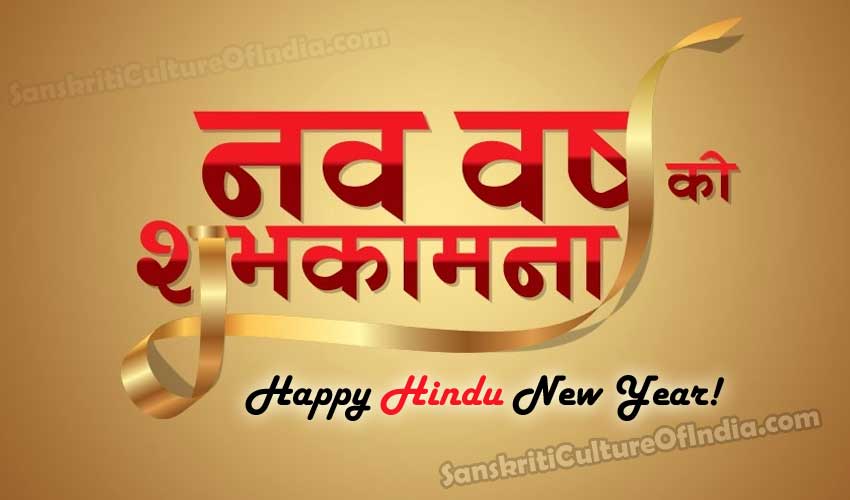The Hindu New Year begins on March 28th this year. Just like the first rays of the sun touch a distant sky, the New Year ushers in a new hope, encourages a fresh start, in more ways than one…as the sun rises on March 28th morning, the first page of the Hindu new calendar opens…
It’s New Year Once Again Across India
The Hindu New Year begins on Chaitra Shukla Pratipada, the first day of the bright fortnight of the Hindu lunar month of Chaitra. It is known as Gudi Padwa in Maharashtra, Ugadi in Andhra Pradesh, Yugadi in Karnataka, Vishu in Kerala, Bihu in Assam, Poila Baisakh in Bengal, Baisakhi in Punjab, Varsha Pirappu in Tamil Nadu, and Cheti Cheti Chand for the Sindhi community…
Remembering Lakshmi:
The day naturally also marks the start of the Hindu financial year…this is time when financial notebooks are opened, new accounts are marked, and businesses strike a fresh note…
Nature’s Directive:
As the first day of Chaitra approaches, Nature seems to be conspiring as well to make it the ideal time to celebrate the new year. The spring season is in full swing, and the trees are bearing new green leaves and flowers…
Bhagawad Gita:
What better season to start the New Year, when Krishna himself has said in the Srimadbhagwadgita (10.35): “Among the seasons, I am Vasant (spring)…”
The Universe Is Born:
The Universe got created on this day: It was on this day that Brahma created the Universe and Satya Yuga began. No wonder, there can be no better day to commence the New Year…
Astrological Auspiciousness:
The day is as auspicious as it gets, naturally. It is one among the few three-and-a-half auspicious days, known as mahurats. The special feature of a mahurat is that unlike other days, when one has to choose an auspicious moment to perform a ritual, on these auspicious days, every moment may be auspicious.
Divine Frequencies:
The higher incidence of Prajapati sanyukta, or conjoint frequencies, happens on earth on this day. All 108 frequencies, one each from the four parts or charans of the 27 lunar asterisms from the region of lunar asterisms – known as Nakshatralok, reach the earth. They disintegrate further into four types of frequencies – yama, surya, prajapati and sanyukta… at sunrise time, the chaitanya or divine consciousness emitted from these frequencies, can be retained for a longer period…
Ugadi:
The people of Andhra Pradesh and Karnataka celebrate the New Year by cleaning their homes and putting colourful rangoli in front of their homes. they also decorate the front doorway with mango leaves to usher in prosperity…
Gudi Padwa:
In Maharashtra, the day is known as Gudi Padwa. People wear new clothes and clean their homes. A special feature is the “gudi” on whose name the festival is named – where, a pole is raised with a silk banner, with an inverted urn placed at one end, a symbol of gratitude expressed towards Mother Nature…
Vishu:
In Kerala, the day is known as Vishu. As a symbol of gratitude, vessels filled with gold and silver coins, currency notes and money, besides platters of the choicest fruits are kept in front of an image of Guruvayoorappan, the name for Vishnu. A special feature is children being taken by the hand to see the image of God and given token spending money…known as vishukani…
Poila Baisakh:
To welcome the new year, known in Bengali as “Naba Barsha”, people invoke Goddess Lakshmi as well as begin new enterprises today. Businessmen open new ledgers with the “Haal Khata” ceremomy. The culturally rich Bengali community naturally marks the day with dance and song…
Bihu:
The people of Assam, in India’s North-East, usher in the new year with Bihu, also known as Bohaag Bihu or Rongali Bihu. The typical sound of drumbeats can be heard as people dance the traditional “Mukoli Bihu”…
Baisakhi:
In Punjab, the day is known as Baisakhi, associated with the harvest festival. People dance the bhangra and perform the giddha, to the sound of the dholak. The day is also revered by the Sikh community because it was on this day that the Khalsa brotherhood was formed by Sikh Guru, Guru Gobind Singh.
Cheti Chand:
The Sindhi community celebrates Cheti Chand as the birthday of Jhulelal, the patron saint of the Sindhis. Sindhis also worship Varuna, the water god, on this day, through devotional music like bhajans and aartis…
Varsha Pirappu:
The Tamil people celebrate Varsha Pirappu. The day dawns by observing Kanni or viewing auspicious things as this ritual is believed to usher in good fortune. Doorways are garlanded with mango leaves strung together and Kolam (rangoli) is drawn on the front porch. This is followed by a ritualistic bath. A special aspect is to introduce the Tamil Panchangam, a book on predictions for the New Year.
So, here’s wishing you all a very happy New Year all over again…may the year be a good one for people of different communities across India…
~ Radhika Ravirajan










